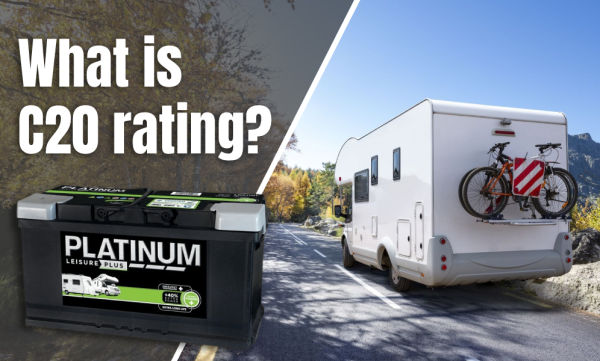Leisure batteries are the lifeblood of any outdoor enthusiast's adventures. Whether you're embarking on a camping trip, sailing voyage, or simply enjoying life on the road in your recreational vehicle, a reliable and efficient leisure battery is essential. Among the various specifications and ratings associated with these batteries, the C20 rating stands out as a crucial factor in determining their performance and longevity. In this blog post, we will delve into the C20 rating of leisure batteries, exploring what it entails and why it matters.
What is the C20 Rating?
The C20 rating refers to the capacity of a battery when discharged over a 20-hour period. It is a standardized measure used to assess the energy storage capabilities of a leisure battery. The rating is expressed in ampere-hours (Ah) and indicates the amount of current the battery can provide over a 20-hour period while maintaining a certain voltage level.
Understanding the Significance:
The C20 rating is an essential aspect to consider when selecting a leisure battery for your specific needs. It provides valuable information about the battery's capacity to power various electrical appliances and equipment typically found in recreational vehicles or boats. A higher C20 rating generally indicates a larger capacity battery, capable of providing more energy over an extended period.
Calculating Battery Usage:
To determine the battery capacity you require for your adventures, it is important to consider your power consumption needs. Start by listing all the electrical devices you plan to use, noting their power requirements in watts. To convert watts to ampere-hours, divide the power in watts by the battery voltage (usually 12 volts). For example, if a device requires 120 watts of power, the current draw would be 10 amps (120 watts ÷ 12 volts). Next, estimate the total hours you anticipate using these devices daily and add up the ampere-hour requirements. This calculation will help you determine the appropriate C20 rating for your leisure battery.
Practical Considerations:
While the C20 rating is a valuable guideline, it is crucial to remember that real-world conditions can affect the battery's performance. Factors such as temperature, discharge rate, and overall battery health can impact the actual energy storage and delivery. Therefore, it is advisable to choose a leisure battery with a higher C20 rating than your calculated requirements to ensure reliable performance in varying conditions.
Balancing Weight and Capacity:
It's important to strike a balance between battery weight and capacity, as leisure batteries can be heavy. A higher C20 rating often results in a larger and heavier battery. Consider your vehicle or boat's weight limits and available storage space when selecting a battery with an appropriate C20 rating. Opting for lightweight lithium-ion leisure batteries can provide higher energy density and greater usable capacity while reducing overall weight.
Conclusion:
The C20 rating of leisure batteries is a crucial specification that determines their capacity and ability to provide power over an extended period. Understanding the C20 rating empowers outdoor enthusiasts to select the right battery for their adventures, considering their power consumption needs and practical constraints. By choosing a leisure battery with an appropriate C20 rating, you can ensure reliable and efficient energy storage, enabling you to fully enjoy your time on the road or water with peace of mind.

